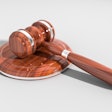
The following warnings are all too typical:
"The RSPCA, citing rampant pet obesity in the land down under, is warning Australians to stop overfeeding their dogs and cats," proclaimed The Guardian. "Overweight pets are at greater risk of developing health problems such as diabetes, mobility problems, difficulty breathing and increased pressures on the heart. Overweight cats often develop skin problems from not being able to groom properly."
"The latest in a recent flood of warnings about the obesity of pets in Britain comes from pet insurer Saga Pet Insurance. The company is warning Britain's animal lovers to monitor their pets' weight following research that finds that a third of dogs and one in 10 cats in the UK are clinically obese."
What's wrong with these warnings? Messages that point out the prevalence of pet obesity are likely to be less effective in preventing it.
Testing messages
Psychologist Robert B. Cialdini, in Current Directions in Psychological Science (August 2003), offers evidence that it is a serious error to focus on the prevalence of a negative behavior. Instead, messages should focus on what is approved or disapproved.
Cialdini gives an example from Arizona's Petrified Forest National Park, which suffers from the estimated theft of more than a ton of wood per month by visitors. He tested two different signs:
- Sign one: "Many past visitors have removed petrified wood from the Park, changing the natural state of the Petrified Forest."
- Sign two: "Please don't remove the petrified wood from the Park, in order to preserve the natural state of the Petrified Forest."
As predicted, the first sign resulted in significantly more theft than the second (7.92% vs. 1.67%).
The lesson
Within the statement, "many people are doing this undesirable thing," lurks the powerful and undercutting message, "many people are doing this."
How does Cialdini's work apply to pet obesity warnings? In my opinion, petfood companies should not talk about how common pet obesity is, but rather focus on how owners can determine if their pets are overweight and give practical advice. Acquainting owners with how to score their pets' body condition is a good first step.
The American Animal Hospital Association 2000 Pet Owner Survey reported that 17% of pet owners rated their pets as overweight. Veterinarians estimate 44% of their patients are overweight. This discrepancy illustrates pet owners' lack of awareness of an appropriate body condition for their pets. Without awareness, they do not take the necessary steps to correct the problem.
Industry's role
Veterinary nutritionist Sean Delaney's advice for petfood companies includes:
- Address pet owners' lack of awareness that their pets have a problem.
- Give specific exercise recommendations.
- Supply clear feeding guidelines for treats, including recommendations for decreasing regular meal amounts.
- Encourage pet owners to adjust food intake so their pets maintain an ideal body condition. Stress that recommended feeding amounts are only starting points and will likely need to be changed.
In facing the daunting challenge of pet obesity, we need all the tools we can get.

















